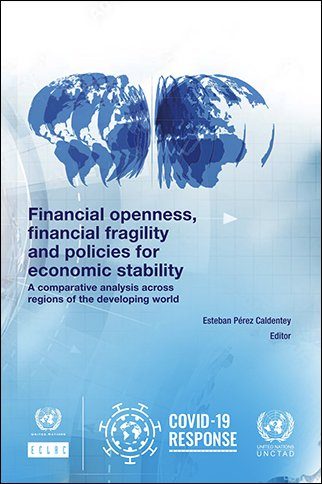Publisher: Third World Network Year: 2023 No. of pages: 42 Download now About the Book…
Perilous Passage: Mankind and the Global Ascendancy of Capital Author: Amiya Kumar Bagchi

Publishers : Oxford University Press
ISBN-10 : 0742539210
ISBN-13 : 978-0742539211
About the Book
Investigating the emergence of the states on the North Atlantic seaboard as prosperous and powerful nations, and their eventual domination overthe rest of the world, Perilous Passage presents an engaging account of the economic emergence of the contemporary world. Differing radically from the ‘free market’ theorists, Bagchi provides a much-needed alternative perspective of global economic history from sixteenth century to contemporary times. The author brings together insights of historians of war and those of Marxist and world-system theorists to characterize the emergence and operation of capitalism. Moving beyond the ‘European miracle’ and a Eurocentric vision, he provides a comprehensive history and the reciprocal impact of the extra-European world. Bagchi also explores the numerous ways in which the armed ascendancy of European capitalism impacted the human development of different countries. Going beyond existing interpretative frameworks, this book highlights the role of capitalist competition for markets, raw materials, territories, and human labour. It interweaves the ideologies governing the conquering career of capitalism. The author also situates the neo-global order against the backdrop of antisystemic struggles, wars, and contradictory movements within global capital. The uniqueness of this volume also lies in presenting a global history, which for the first time puts human development at centre stage. Departing from the triumphalist account of development of currently advanced countries, it treats the development of all peoples of the world as being equally important.
About the Author
Amiya Kumar Bagchi is the founder and director of the Institute of Development Studies in Calcutta, India.
Book Review
Mammon and Mankind
The best economic history mines data from the past to establish distinct patterns, impute causal effects and unravel the mechanisms that drive economic sub-systems.
But given the demands set by scholarship based on archival records and atypical sources, the advance of knowledge often tends to be marginal and yet controversial. Innovative discussions on local or sectoral developments are so specialized in terms of subject matter that they are known only to researchers in the same or allied fields. But as the output of such scholarship accumulates the potential for analyses that provide the big picture increases. Despite some gaps or inadequacies of evidence, through such analyses, the larger story of the dynamic of whole systems can be told. The best scholars among those who have muddied their hands analyzing the microcosm, with the erudition needed to cover the experience of many continents and examine the process of economic and social evolution over centuries, can step back and synthesize the results yielded by the efforts of many others, besides their own.
When pursuing history writing of this kind, it is inevitable that the predilections of individual historians are bound to influence the data filtered, the patterns read and the causal forces imputed. Hence, differences in the interpretation of the dynamic of history and its implications are substantial and characterized by a high degree of partisanship. However, for the reader, history of this kind is most interesting, especially when it validates and enriches perspectives derived from a reading of the present.
From the point of view of relevance to the present, it is the history of capitalism as it evolved over a period of four centuries that is most fascinating. But this can also be the most controversial and partisan of economic histories, given the fact that different attitudes to the present can be justified by different readings of that past. The volume under review is one more contribution to the synthetic histories of capitalism, sited clearly in a tradition deriving from Marx. It shares with some, though not all, of them, the erudition, the organizational ingenuity and the power of reasoning needed to make the exercise worthwhile for the reader.
But it also stands above many such earlier attempts for a number of other reasons. First, a factor motivating the exercise is the need to go beyond conventional economic histories focusing on the expansion and diversification of capitalist production, to examine the effect this had on the quality of life of those who populated the lands that capitalism encompassed.
Second, in doing so, it challenges the view that the rise to dominance of Europe and its settlements, was the result of a long period of evolution starting around the tenth century that delivered the material for competitive success and a better quality of life to its populations. Rather, Bagchi argues, there is little evidence to support the view that Europe had any competitive edge over India and China in the period prior to the Industrial Revolution. Moreover, despite the Industrial Revolution, the population of Europe did not enjoy the benefits of a reasonably long life, decent health, widespread literacy, sizeable education and adequate individual freedom before the dawning of the twentieth century. Thus, for example, the evidence garnered by Bagchi suggests that, contrary to common perception, during the 1600s and 1700s the rate of growth of the populations of India and China was greater than that in Europe.
Third, the book marshals evidence to establish that the success of Western capitalism starting with the Industrial Revolution was the result not just of newfound competitive capacities, but of subjugation based on war and occupation epitomized by the role of the slave trade in lubricating the capitalist mechanism. This was of course the starkest of many crude ways through which surplus was transferred from the periphery to the metropolis and then on to the regions of recent settlement. That is, the success of capitalism in the metropolis was tied to and dependent on the subjugation and colonization of the periphery. What is more, commodities such as sugar produced in the slave-run plantations directly contributed to well being in Europe by adding significantly to the calorie intake of European populations.
Finally, the book contests the ideologies that accompanied the rise to ascendance of capital, which presented its aggressive and gory expansion as a civilizing mission that the superior European races had to undertake in the ultimate good interests of the inferior populations they subjugated. They even present the military success of the West as the outcome of a form of economic Darwinism in which the economically superior bested the less capable on whom resources could not be wasted.
This apologetic view does not, of course, take into account the fact that the benefits of capitalist success accrued to a miniscule elite even in Europe through much of its history. The process of capitalist development right up to the nineteenth century proved inadequate to substantially transform the quality of life of most Europeans, let alone the non-white populations devastated by European conquest. Bagchi collates wide-ranging evidence to establish the poor and even declining status of Europeans as measured by longevity, health, literacy and education during the seventeenth, eighteenth and even nineteenth centuries. Often the evidence cited is based on an unusual range of data sets: figures on the population of and burials in Aix-en-Provence in France in 1695; the heights of women convicts transported from England and Ireland to the penal colony of New South Wales between 1800 and 1815 and of East India Company recruits in the United Kingdom between 1815 and 1860; the ability of Dutch brides and grooms to sign their names in marriage registers in the 1670s; and so on. All of them point to the disjunction between the economic expansion of Europe and the improvement in the quality of life of its populations.
According to Bagchi, three developments during the last quarter of the 19th century changed matters with regard to the quality of life in Europe. These were: the prophylactic measures resulting from the development of the germ theory of disease; the migration of European populations to the United States, Canada and other regions of recent settlement; and the emergence of workers’ resistance and democratic movements that forced governments to respond with improved health and educational provision as well as measures aimed at protecting workers, which extended to the 1980s and after, excepting for breaks during the years of fascist success. These were the developments that made the last quarter of the nineteenth century the second “axial age” after the Industrial Revolution. The first witnessed the separation of output and productivity expansion in the developed countries of today from that in the underdeveloped countries. The second saw the beginning of a process of divergence of human development in present day advanced countries and the rest of the world.
This was obviously because the belated improvement in human development indicators in Europe did not spread in adequate measure to the regions outside the metropolitan centres of capitalism. One reason for this was the integration into the empire of capital of the underdeveloped regions initially as sites of plunder to finance capitalist accumulation in the metropolis, then as sources of raw material for metropolitan production and finally as markets for metropolitan produce. All of these involved a drain of surpluses that deprived them of resources that could be used to defray the costs of public provision and intervention needed to make a difference to the quality of life. Another reason was that many of them remained colonies well into the twentieth century, and colonial governments, their civilizing rhetoric notwithstanding, were not interested in improving the quality of life of native populations, other than in cases (illustrated by Macaulay’s educational agenda) where it was needed to support the colonial administration.
The net result was that developments after the late nineteenth century radically separated the literacy levels, longevity, educational standards and overall quality of life of the early industrialisers that are now the advanced nations from that in underdeveloped areas of the world today. There was, of course a period of respite in the three decades following the Second World War, when many newly independent underdeveloped countries accelerated the pace of human development advance through public action adopted by national governments. However, progress was limited and inadequate. And, hopes of a substantial closing of the gaps in human development achievement in the developed and underdevelopment countries have been belied by the outcomes observed during the integrationist epoch that began in the 1980s. Globalization has slowed progress on the human development front and widened global disparities in many areas.
Developments during these years were not chance events but a part of the logic of capitalist ascendancy. The era of what is loosely and even euphemistically termed globalization is in Bagchi’s perspective the result of the challenge to capitalist hegemony led by the US that came from the strengthened bargaining power of workers in the developed countries, the increased clout of the now politically independent developing countries and the challenge posed by the socialist, centrally planned economies, especially the Soviet Union and China. In response capitalism had to reconstitute itself in ways that can deal these challenges.
The form the response took involved the rise to dominance of finance capital, which paved the way for the accelerated integration of differentially developed regions of the world by breaking down barriers to the flow of capital, especially financial capital. This was the period when developing country governments were forced or persuaded into adopting open-door policies of a kind that Bagchi’s historical elaboration establishes the developed countries never followed at similar levels of development or even subsequently. The net result was slower growth in whole continents, such as during the “lost decades” in Latin America; economic devastation, as in Africa; greater volatility, as in emerging markets prone to financial crises; and a slow down in or reversal of advance on the human development front even in countries that managed to perform well in terms of GDP growth, such as China and India. Capitalism has been successful, socialism is in retreat, capitalist aggression has increased led by the sole military super power the US, and much of the world’s population benefits little in terms of the quality of life resulting in a widening of global disparities of various kinds.
Bagchi’s effort to track an all-embracing problematic through a trajectory unfolding over centuries is convincing because he backs his central arguments with evidence that spans centuries and straddles many areas of human life. He is also meticulous in his use of data, taking account of their inevitable limitations and their degree of reliability. But at the end of this apparently discursive but actually extremely focused exercise, he is able to drive home his conclusion that behind the rise to ascendancy of capital is “a compulsive drive for power and pelf at the cost of virtually all human values”.
This is a comprehensive rebuttal of the view that at all points of time the developed countries of the day provide the less developed an image of their own future. That view inadequately comprehended the crucial role played by the conquest and devastation of the periphery in the successful development of the metropolis. It is also a damaging critique of the view of self-centred elites in the underdeveloped countries who clamour for a recasting of developing country economic structures and policies in the image of what prevails in the Anglo-Saxon metropolis. That might benefit a small elite in the periphery, but finally only serves the interest of capital rooted in the metropolis. A historical reading of the logic of capitalist expansion makes clear that it can have a “human face” only for a few. As Bagchi notes: “One of the defining characteristics of capitalism has been a contradiction between its universalist claims (being unlike feudalism, ancient slavery, o caste-based systems in this respect) and the delivery of substantive gains to only segments of the population, leaving others in privation.”
The relevance of these conclusions for a reading of the present is obvious. Given the dominance of a discredited neoliberal ideology in the age of finance, this enormous contribution by Professor Bagchi is timely. That it comes with the erudition, research and authority that he brings to the task, is inspiring.
About the Reviewer
C.P. Chandrasekhar is a p



